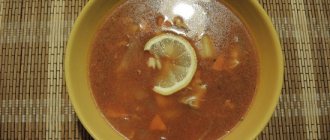Vegetable growing » Carrots
0
957
Article rating
Kira Stoletova
Raw carrots are allowed for children under one year old only in the form of juice closer to 8-9 months. This is a storehouse of vitamins, but it must be used wisely so as not to cause harm. The substances contained in the root vegetable can cause allergies and disruption of the gastrointestinal tract, so it is better to first consult with a pediatrician.
Benefits of raw carrots for children
Benefits of root vegetables for children
Carrots for young children are a complete source of beta-carotene, a substance involved in the synthesis of vitamin A. The mineral is used by the body in metabolic processes, the formation of skin, mucous membranes, bones, and teeth. A lack of vitamin A and beta-carotene impairs the body's resistance, negatively affects vision and the condition of the skin, which provokes the appearance of eczema and other dermatoses at an early age.
Other minerals present in carrots:
- calcium;
- sodium;
- phosphorus;
- potassium;
- folic acid.
Carrots are rich in fiber and pectin, which has a positive effect on digestive processes. Recommended for constipation. Able to have a mild laxative effect. Vitamins B, E and C improve the condition of the immune system and participate in the processes of building the central nervous system, which is extremely important in childhood. The health and development of the baby directly depends on its functioning.
How to prepare carrot puree for babies: step-by-step recipe with photos
The introduction of complementary foods is a very important stage in your baby's growing up. Over time, you begin to introduce him to new foods, which makes the child’s diet more varied and gradually prepares the little body to accept adult food. In this article you will find detailed information about the rules for introducing vegetable complementary foods, and specifically carrots.
- When can you give it to your baby?
- How to start complementary feeding Equipment and kitchen appliances
- Ingredients
- Step by step recipe
- Useful tips for parents
Carrot treat
At what age can a baby be fed carrots? How to prepare complementary foods from a vegetable mixture and how much to give?
Carrot puree can be introduced into complementary foods at five months, when the baby’s digestive system is ready to receive first courses of vegetable and fruit mixtures.
However, carrot puree for babies carries the danger of an allergic reaction to the active substances of this vegetable. Pediatricians recommend introducing complementary foods made from green vegetables, which do not have pronounced allergenic properties.
The introduction of carrots, tomatoes and other brightly colored fruit crops should begin with a minimal portion (the tip of a teaspoon).
After treating yourself to carrots, you need to carefully monitor the baby’s condition to see if he feels unwell.
If the body reacts positively to the introduction of a new dish, the portion should be increased by a spoon per day. How much puree can you give at one time? No more than 100 grams. To keep your baby full, you can add another vegetable mixture to the carrot mixture: zucchini, broccoli or potatoes.
Benefits and harms for the baby
Carrots are a real godsend for a child’s body.
- First of all, it is a storehouse of beta-carotene, from which vitamin A is subsequently formed. Thanks to this vitamin, metabolism returns to normal, new cells grow, it takes part in the formation of the skeletal system and teeth and the development of the body as a whole, helps fight infections and reduces recovery period after illness. The beneficial effects of beta-carotene on visual acuity, skin health and mucous membranes are well known. Symptoms of vitamin A deficiency in 9-11 month old children: dry skin, slow growth and frequent illness.
- Carotene's ally in the fight against colds in carrots is calcium. In addition to this element, this vegetable contains: potassium, sodium, phosphorus, as well as folic acid and other vitamins - B, C, E.
- Carrots contain a lot of pectin and fiber, which promote digestion. If your baby is constipated, the vegetable will have a mild laxative effect. It is advisable to give it to children who have stagnation of bile.
Although in some cases the introduction of such complementary foods can be harmful.
First of all, we are talking about a possible allergy to carrots in a child, which manifests itself quickly - literally after the first feeding. The fact is that the child’s body can react to vitamin A contained in carrots with fever and skin rash.
If parents do not follow the recommended standards, the baby may develop carotene jaundice: due to disruption of the liver, the sclera and skin on the palms and soles turn yellow. The child is vomiting, feeling sick, and sleeping poorly.
It is enough to remove carrots from the menu so that after a few days the baby’s condition improves.
Making your own puree
Where to get carrots for complementary feeding, how to cook them correctly? Boil carrots until soft in a small amount of water. It is better to cook in a double boiler - this way all the valuable substances will be preserved in the fruit and will not partially pass into the liquid.
Some mothers are concerned about the effect of nitrates on the health of their infants. To get rid of doubts and worries, remove the core from the fruit: this is where unnecessary substances accumulate.
Should I cut the carrots into wedges or cook them whole?
There are different technologies for cooking vegetables:
When the carrots become soft, remove them from the water and pass them through a sieve or blender.
Important! The fruits, pureed through a sieve or blender, must be boiled for a minute and only then offered to the baby.
Vegetables for the first feeding: when and how to introduce carrots
Your baby is already 6 months old and you have started your first feeding? And, of course, carrots caught your attention - a healthy vegetable available all year round. We will tell you how to properly introduce carrots into complementary foods
Modern pediatricians and WHO recommend starting the first complementary foods no earlier than 6 months. Is your baby already six months old? Great, then it's time to introduce him to vegetables, cereals and fruits.
It is better to do this with hypoallergenic products that do not have a pronounced color or aroma. However, carrots can become the third or fourth vegetable in a baby’s diet, that is, quite quickly.
This healthy and nutritious product can delight you all year round with an abundance of beneficial vitamins and microelements, which are retained in it even after heat treatment.
https://www.youtube.com/watch?v=R4ABNImLS_I
Carrots are highly digestible and contain enough fiber to help improve baby's digestion. And don’t worry if you see orange fragments of undigested food in the diaper, this is normal.
Carrot puree
Carrot puree for babies can be prepared in different ways. The simplest recipe: beat the boiled fruit in a blender and add a drop of olive oil to the finished mass. If your baby loves butter, you can add 5 grams of ghee. For the very first complementary foods, it is recommended to add breast milk or formula to the puree.
Sugar and salt are prohibited from being added to dishes for infants under one year of age. Vegetables contain the required amount of natural salt.
Carrots with potatoes
This recipe can be used when the baby is familiar with these vegetables and willingly eats them separately for lunch.
- Remove the skins from the vegetables.
- Cut into small cubes.
- Place in boiling water and cover the saucepan with a lid.
- Cook without salt until soft.
- Drain the liquid and beat the puree with a blender.
- Boil the finished mixture for a minute on fire.
- Add half a spoon of vegetable oil (it is better to take olive oil).
Important! The water for cooking vegetables must be brought to a boil and then reduced to a low simmer. The fruits are boiled with the lid closed.
Carrots with cauliflower
Carrot puree goes well with a variety of fruits and vegetables. Often the puree is mixed with boiled vegetables, and carrot juice is added to apple juice. A recipe with cauliflower is one of the options for preparing carrots with other vegetables.
For one carrot we take:
- cabbage inflorescences: 130-140 grams;
- water: 1.5-2 cups;
- vegetable oil: teaspoon.
First, put the carrots prepared for cooking into boiling water, and after 9-10 minutes add the inflorescences. Cook the vegetables over low heat for another 7-9 minutes and drain the water.
Now you need to make a mixture from the pieces using a strainer or blender. The finished mass should be boiled and oil should be added. You can dilute the puree with formula or breast milk.
Puree for the winter
If you grow carrots in your garden, you can stock up on baby food for the winter. This recipe is very simple, but requires careful preparation and sterility.
Carefully peel approximately 1.5-2 kilograms of carrots and cut them into small slices, cook for about 30-34 minutes. While the fruits are boiling, sterilize the jars and lids.
We puree the carrots, put them in jars and pasteurize them in a water bath. After the lid, we roll up the jars and send them to the basement or a cool, dark place for storage.
How long to store? Until the next carrot harvest.
Source: https://kcdc.ru/simptomatika/morkovnoe-pyure-dlya-grudnichka.html
Side effects and contraindications
Carrots are healthy for one-year-old babies, but in reasonable quantities. It is a powerful allergen and excessive consumption causes carotene jaundice. In such cases it is observed:
- yellowing of the skin of the feet and palms;
- decreased appetite;
- nausea, vomiting, diarrhea.
All these symptoms go away as soon as the product is eliminated from the diet. It can be given again with extreme caution and under the supervision of a doctor. If your baby has an allergy to root vegetables, urticaria, or, in rare cases, swelling of the larynx, consult a doctor and conduct an examination of the gastrointestinal tract, change the diet, choose a more gentle diet
It is not recommended to introduce carrots into the diet before one year of age. Contraindication is pathology in the gastric tract.
Possible problems
During the first feeding, the mother should carefully monitor the child’s well-being. A negative reaction manifests itself in:
- lethargy;
- drowsiness;
- nausea and vomiting after feeding;
- if root vegetables are consumed too often, jaundice may appear (the skin and whites of the eyes will turn yellow);
- in rare cases, urticaria and even swelling of the laryngeal mucosa occur.
Symptoms disappear as soon as the product is eliminated from the diet.
Signs of allergies
An allergic reaction to root vegetables may appear immediately, or maybe after a few hours.
- The baby becomes slow and apathetic;
- Pain in the abdomen is disturbing, diarrhea, nausea or vomiting may begin;
- The skin becomes covered with spots, itches, rashes, and irritations greatly bother the child.
In winter, preparing carrot puree for babies is doubly healthy. During the period of infections and viral diseases, it will strengthen the immune defense, add health and invigorate on harsh cold evenings.
- The baby becomes slow and apathetic;
- Pain in the abdomen is disturbing, diarrhea, nausea or vomiting may begin;
- The skin becomes covered with spots, itches, rashes, and irritations greatly bother the child.
Hello my dear readers. The topic of complementary feeding is inexhaustible, because every new product raises a lot of questions and warnings for a caring mother.
Carrots are no exception; sooner or later, a mother thinks about introducing this healthy vegetable into her child’s diet, and, of course, she has trivial questions.
How to prepare carrots for complementary feeding, at what age, what benefits does it provide, how much and how often can you give, and is there an allergy to it? Today we will try to answer the most common questions, and we invite you to also participate in the conversation.
Time of introducing complementary foods
It is not recommended to eat carrots often
Carrots, as a complementary food in raw form, are introduced only after a year. It is poorly digested by the gastrointestinal tract that is not yet fully formed, which leads to serious disorders. Complementary foods in the form of steamed or boiled puree are introduced together with other vegetables at the age of 7 months. It is permissible to give puree to bottle-fed children 2 months earlier. The root vegetable should be introduced into the diet only after becoming familiar with potatoes, broccoli, and onions (all in the form of puree).
Vegetable juice is allowed for the baby at 8-9 months. For the first time it is better to give ½ tsp. in the morning hours. The reaction is monitored throughout the day. You should not give carrot juice or puree every day. Prepare dishes using the root vegetable 2-3 times a week, then gradually add pumpkin to your diet.
These deadlines are standard but may vary depending on:
- the baby’s health status (during illness, children are not introduced to the diet with new foods);
- reactions to other vegetables;
- the number of vegetable crops introduced into the diet;
- individual characteristics of intestinal function.
Introduction of raw root vegetable
The benefits of raw carrots for a child’s body are much greater than those of boiled carrots. Freshly squeezed juice retains all the beneficial properties and helps accelerate the growth of the little one. It is recommended to introduce raw root vegetables into your baby’s diet every year.
For the first time, it should just be juice or small quantities of finely grated carrots. A little later you can prepare a salad by mixing the root vegetable with an apple. Add a couple of drops of vegetable oil or unsweetened yogurt (low-fat sour cream) to a salad with vegetables.
Recipe for carrot puree for first feeding
Wash the peeled carrots and chop (you can use a grater). Boil in water until fully cooked. Then place on a sieve and mash. Add breast milk or formula and bring to a boil.
Recipe for puree with carrots and cauliflower
Cut the peeled carrots into slices and place in a pan of boiling water. After 10 minutes, add a few cauliflower florets. Cook for a few more minutes. Grind the finished mass using a blender and add vegetable oil.
Orange Root Vegetable Juice Recipe
Wash the carrots, peel and scald with boiling water. Grate using a grater. Then use your hands to squeeze out the juice through cheesecloth. Dilute the resulting juice with water in a 1:1 ratio.
Recipe for carrot cutlets with semolina for feeding children over one year old
Wash carrots (about 700 g), place in a pan with water and cook until fully cooked. Peel the cooled, finished carrots and chop them using a grater. Pour half a glass of semolina, a little sugar into the resulting mass and mix everything. After making small balls, roll in flour and place in a frying pan greased with vegetable oil.
This recipe is suitable for steaming cutlets. In this case, complementary foods can be given earlier (about 10-11 months).
Recipe for carrot puree for long-term storage
You need to take 1.5 kg of carrots. Wash, peel and cut into small pieces. Cook until tender (about 30 minutes). Prepare jars that need to be washed and sterilized. Grind the finished carrots using a blender and place them in jars and roll them up.
Carrot and potato puree recipe
Wash one potato and half a carrot, peel and cut into slices. Boil in water until fully cooked. After this, grind the vegetables in a blender. You can add breast milk, formula or vegetable broth and a few grains of salt.
The benefits of carrots are great, but only when there is no allergy. Dishes with the addition of carrots can be prepared for children up to one year old and older. There are many recipes for carrot puree, all mom has to do is prepare it. Do not forget to monitor the reaction of the baby’s body.
Optimal amount of vegetable consumption
It is important to follow the dosage in everything related to baby food. Children 2-3 years of age can already eat carrots a day on their own. Make sure that the amount of consumption does not exceed 1000 mg in 2 days.
Exceeding the specified norm leads to the appearance of a rash and stomach upset. Children can consume freshly squeezed root juice with apple 50 ml once every 2-3 days. It is worth considering that the child’s gastric tract is not yet sufficiently adapted to the aggressive acids contained in fresh juices, so it is better to dilute them with boiled water.
Composition of carrots compared to apples
| carrot | apple | |
| kcal | 33 | 47 |
| Proteins, g | 1,3 | 0,4 |
| Fats, g | 0,1 | 0,4 |
| Carbohydrates, g | 7,2 | 9,8 |
| Water, g | 89 | 86 |
| Fiber, g | 0,8 | 1,8 |
| Potassium, mg | 234 | 278 |
| Sodium, mg | 65 | 26 |
| Calcium, mg | 46 | 16 |
| Phosphorus, mg | 60 | 11 |
| Magnesium, mg | 36 | 9 |
| Vitamin PP, mg | 1 | 0,3 |
| Beta carotene, mg | 1,1 | 0,03 |
| Vitamin A, mcg | 183 | 5 |
| Vitamin B1, mg | 0,1 | 0,03 |
| Vitamin B2, mg | 0,02 | 0,02 |
| Pantothenic acid, mg | 0,3 | 0,07 |
| Vitamin B6, mg | 0,1 | 0,08 |
| Folic acid, mcg | 9 | 2 |
| Vitamin C, mg | 5 | 10 |
| Vitamin E, mg | 0,6 | 0,2 |
| Vitamin K, mcg | 13,2 | 2,2 |
| Biotin, mcg | 0,06 | 0,3 |
| Iron, mg | 1,4 | 2,2 |
| Zinc, mg | 0,4 | 0,15 |
| Iodine, mcg | 5 | 2 |
| Copper, µg | 80 | 110 |
| Manganese, mg | 0,2 | 0,047 |
| Fluorine, mcg | 55 | — |
| Chromium, µg | 3 | 4 |
| Molybdenum, mcg | 20 | 6 |
| Cobalt, µg | 2 | 1 |
Selecting a quality product
Choosing high-quality root vegetables is the key to your baby’s health.
- the shape of the carrot should be natural, without bends or pineal processes;
- the skin is smooth, bright orange, without various dark inclusions;
- if you need to keep raw carrots fresh longer, you should give preference to specimens with tops: be sure to cut them off at home, otherwise the foliage will draw out all the juices from the fruit;
- avoid buying limp vegetables with blackened ends;
- beneficial properties are preserved in fruits of elongated shape, medium size and weighing 150-200 g;
- the fruit is too thick, contains a lot of nitrates, is bitter, has virtually no juice, is difficult to peel and causes inconvenience in cooking.
Symptoms of a negative reaction to carrots
German pediatricians advise young mothers to start their first vegetable complementary foods with carrots. They believe that the benefits of the root vegetable are much greater than the risk of negative reactions. Before following this and other advice, parents should rule out the risk of inherited food allergies and consult their doctor.
During the first feedings, it is important for the mother to closely monitor the well-being of the little eater. A negative reaction to the root vegetable may be indicated by lethargy, drowsiness, nausea and vomiting after feeding. With frequent consumption of the vegetable, the skin and whites of the eyes may acquire a yellowish tint. In rare cases, urticaria and even swelling of the laryngeal mucosa are observed. After eliminating the root vegetable from the diet, everything returns to normal.
Cooking features
When peeling carrots, cut off the peel, partially capturing the pulp, about 0.5 cm (this is especially true for large fruits). Shorten the top and bottom by at least 1 cm. If young children are trying complementary foods not for the first time, carrots are mixed with mashed potatoes and broccoli. Before heat treatment, wash the fruit thoroughly, cook until tender, and grind in a blender.
You can steam the carrots. Then it will retain more nutrients. Carrots are useful in any form. The processed vegetable practically does not lose valuable substances and is much better absorbed. When exposed to high temperatures, fiber breaks down, releasing beta-carotene.
You can make a healthy vegetable soup with carrots by adding broccoli, onions and chicken liver. For the little ones, grind the mixture in a blender. Older children are given whole boiled soup ingredients.
Basic rules for preparation and consumption
- Give preference to firm, whole, well-shaped vegetables.
- Look for carrots with smooth skins and a deep orange color.
- For a baby, it is better to buy medium-sized carrots, they are juicier and sweeter.
- To avoid the risk of nitrate penetration, cut off as much of the peel and butt of the vegetable as possible.
- Complementary feeding should be introduced only when the baby is feeling well. A prerequisite is the absence of vaccination two weeks before and after the introduction of the vegetable.
- Do not forget to prepare the puree with a homogeneous consistency, preferably one-component.
- Try to immediately accustom your child to a plate and spoon; it’s time to forget about the bottle.
- Introduce complementary foods in the morning, giving no more than one teaspoon of puree. If well tolerated, increase the portion and bring it to 40 grams. And by one year old – up to 200 grams.
- If an allergic reaction or carotene jaundice occurs, immediately stop eating carrots. After two or three months you can try again.
- Give your child exclusively fresh food. You should not give puree that has been reheated from the refrigerator; do not be lazy and cook a new portion.
- The baby should only eat warm food.
- There is no need to add salt, sugar or other spices when making carrot puree.
- It is best to steam carrots. This way there is a greater chance that the vegetable will retain maximum of its valuable qualities.











